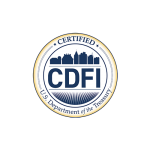Your company’s website is your direct connection to both new and existing customers. Your business’s website needs to perform at its best. Customers expect a fast, secure, and easy-to-navigate site. Here are 10 things to consider that can improve your website and its performance.

1. Optimize for Mobile
Let’s face it; we live in a mobile-first world. There’s no doubt that most of your site’s visitors will be viewing from a handheld device. Mobile optimization should be a priority from the start, but in many instances, it’s not.
Your site may look awesome on desktop but look like a jumbled mess on a mobile screen. The majority of your visitors – mobile users – won’t stick around for that. Make your site look awesome on all devices. Take advantage of your browser’s developer tools function to preview your site on different screen sizes and make the necessary changes for giving your users the best experience possible.
2. SSL
Secure sockets layer, or SSL, is an absolute must-have protocol for every website nowadays. If your site isn’t secure, your visitors are going to have a hard time trusting it and will most likely leave, making your bounce rate climb.
Most internet users understand the purpose of HTTPS in some way or another. The all-too-familiar lock icon next to a URL means that you’re on a secure website. It may be cute and little, but seeing it generates an amazing amount of trust. Users then know that their personal information will be kept private and secure (through authentication and encryption of their data).
3. Optimize for Speed
The need for speed is real. If your website pages take more than three seconds to load, your bounce rate starts to climb. Yes, only three seconds. When your bounce rate starts to climb, search engines notice, and your rankings start to drop. Did you know that one of the easiest things that you could do to start optimizing for speed is simply reducing the file size of your images?
4. Optimize for Accessibility
Your website should be accessible to all users, including those with disabilities. Does your multimedia have captions for those with screen readers? Is your content easy to see and hear? Is functionality available from a keyboard? These are only a few of many questions you could be asking yourself. Take the extra time to research what it is that you could do to remove any barriers and make your website as accessible as possible.
5. Add Compelling Content
Assuming you haven’t already, start a blog! Content is king, and shareable content is even better. But why? Users are constantly looking for something engaging or looking for answers. If they can’t find either on your site, they’ll move on to another.
6. Consider Your Calls to Action
If you don’t have any or many calls to action, you desperately need some. You want to motivate your visitors to take action on your site, whether this means to make a purchase, sign up for a newsletter, or something else. Take the time to revamp your calls to action if necessary. Remember the saying, “Hook, line, and sinker!”
7. Add Sitemaps
Reevaluate your site structure and simplify navigation. A sitemap is an organized way to tell search engines what pages on your site are available for crawling and allows for them to crawl it more intelligently. You can easily build and submit an XML sitemap through Google Search Console.
Having a solid site structure allows search engines and users to see how your website connects to itself and all comes together. Make sure that your site is organized and easy to navigate to promote a better user experience. This will also make it easier for search engines to understand what your site is about.
8. Make Sure Your Purpose is Clear from the Start
Your website is drop-dead gorgeous; that’s great! But what’s it for? Make sure visitors know almost immediately. By not having the purpose of your content in your introduction, it’s going to make it hard for search engines – and thus your target audience – to find you.
9. Make It Easy to Contact You and Find You on Social Media
It’s quite frustrating clicking all over a site trying to find a point of contact when you need it most. Common places for contact and social media links are in headers and footers, so be sure to include yours where people expect to see them.
10. Take the Time to Fix Broken Links
There’s nothing worse than landing on a broken page when you’re scouring the internet for something. It makes for a poor user experience and you typically end up losing visitors, and your bounce rate takes another hit. Take the time to check for and fix any 4xx errors and add doing so to your ongoing maintenance list if you haven’t already.





